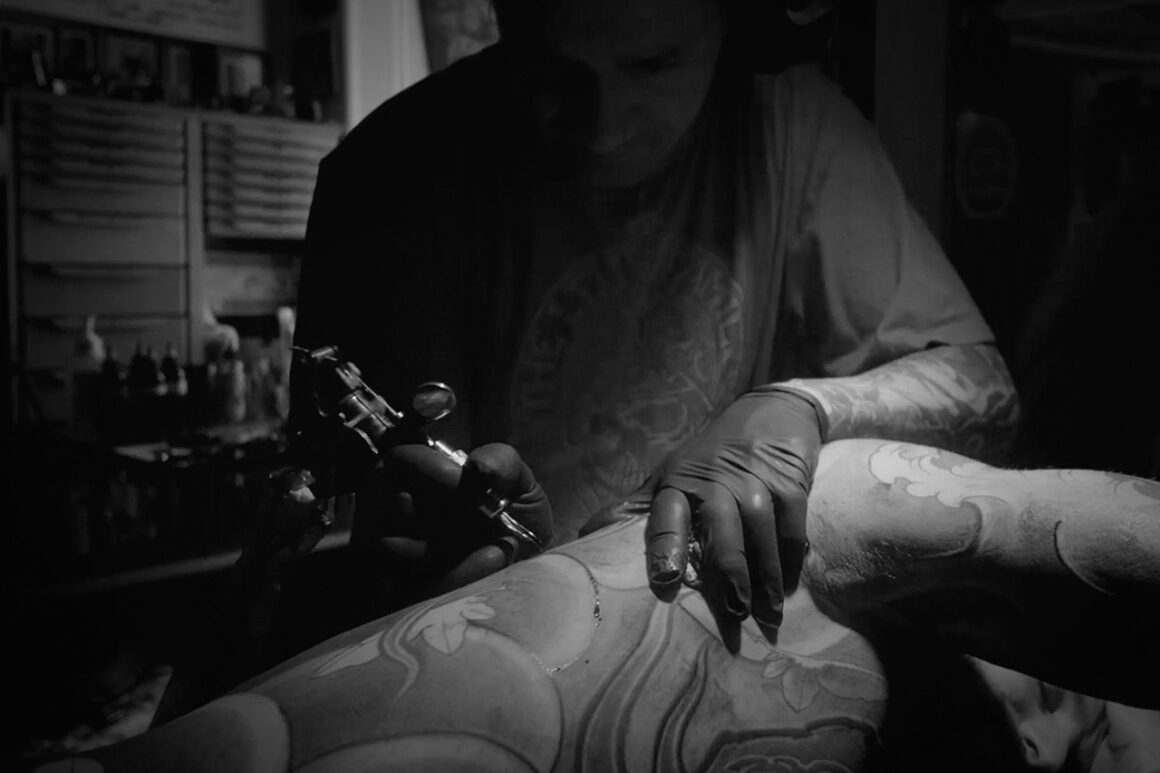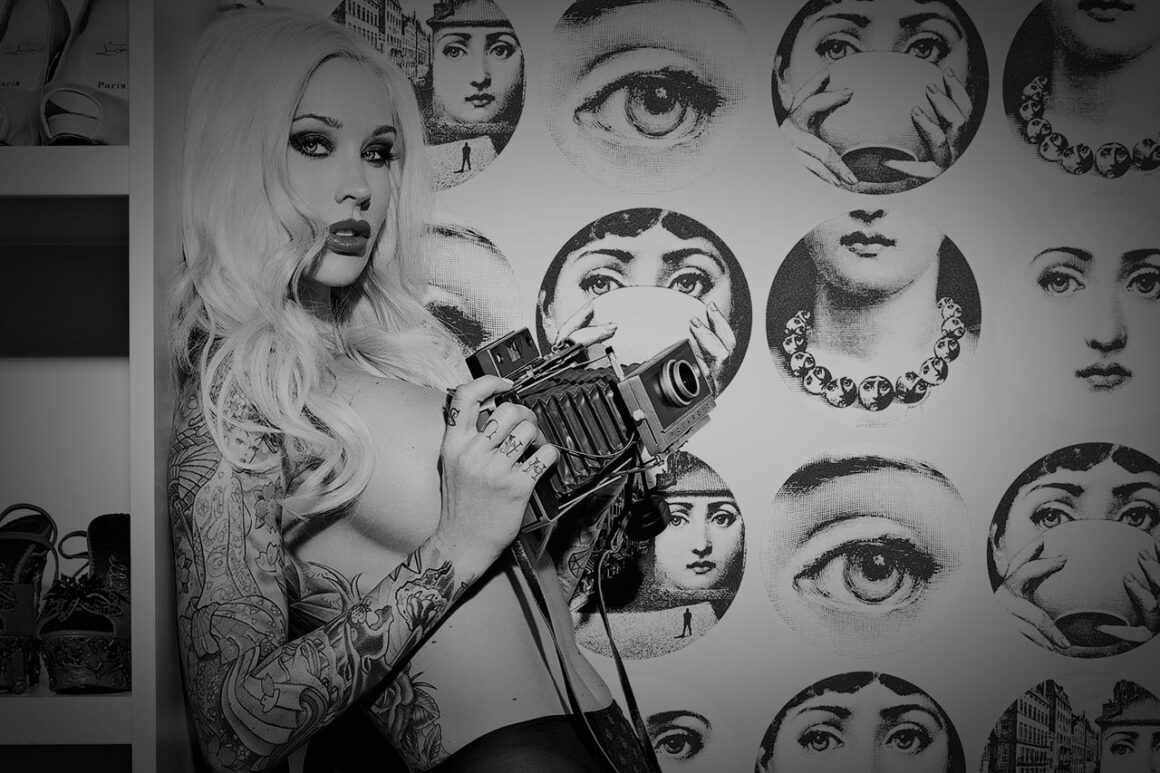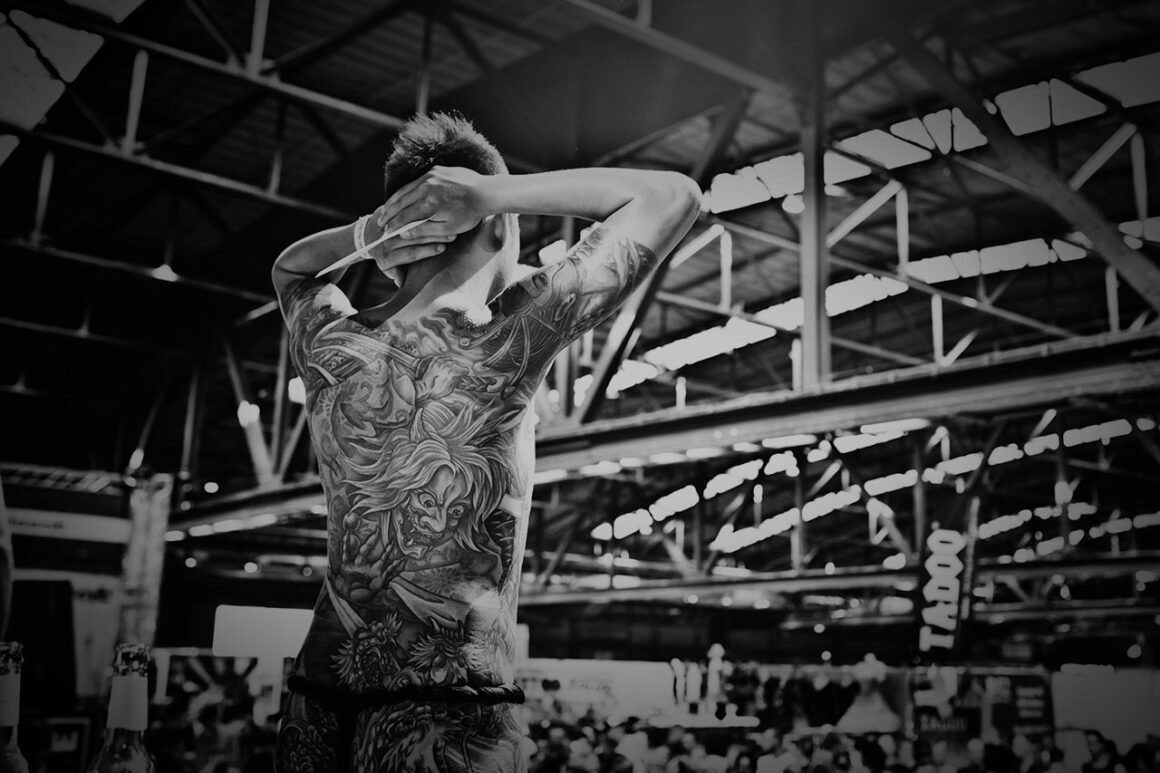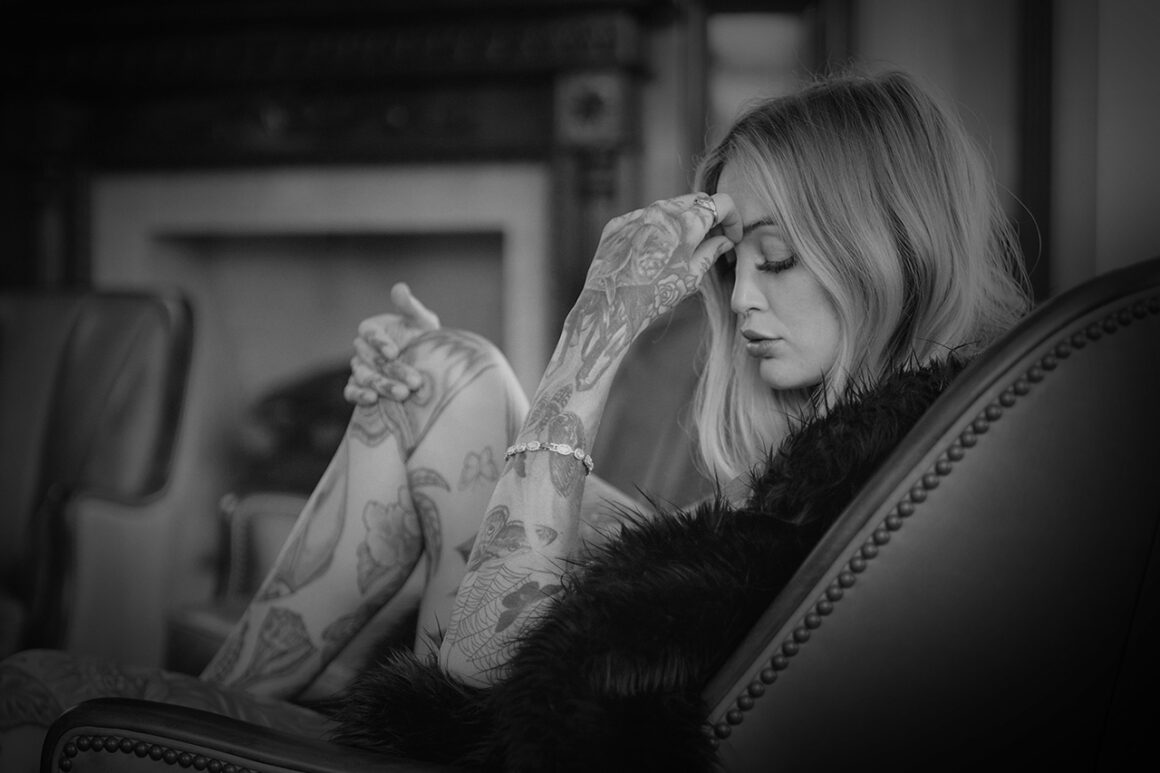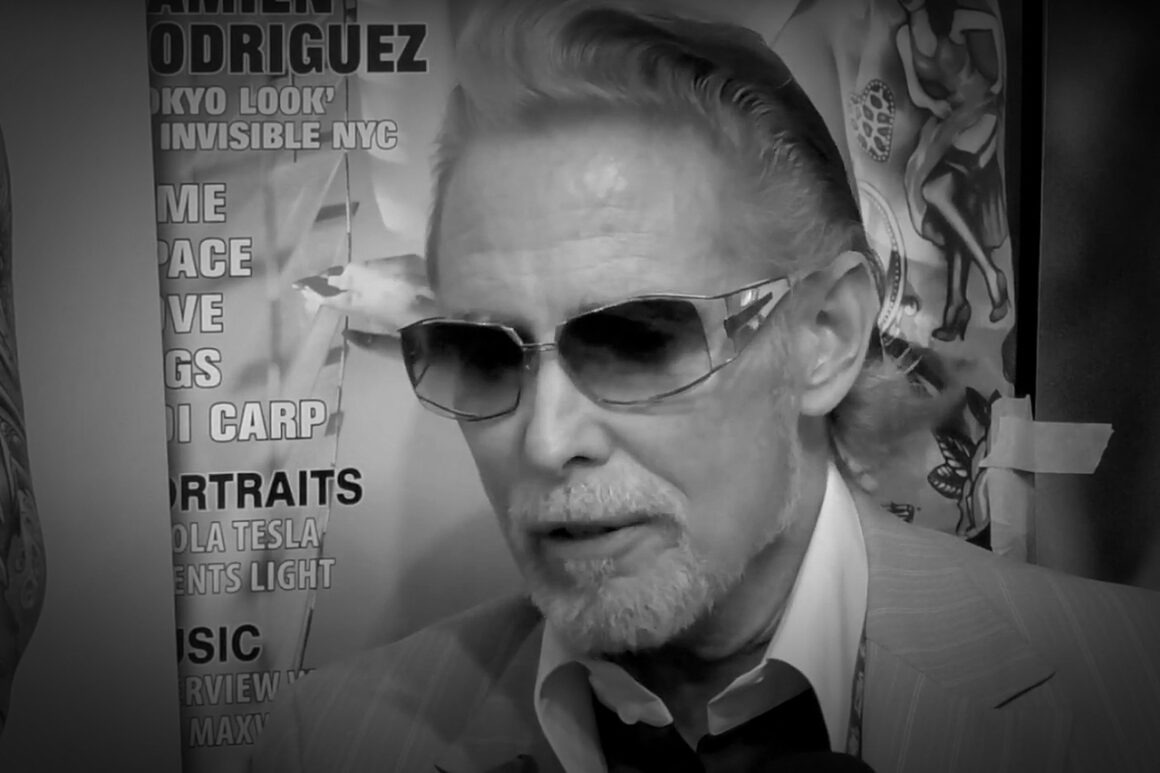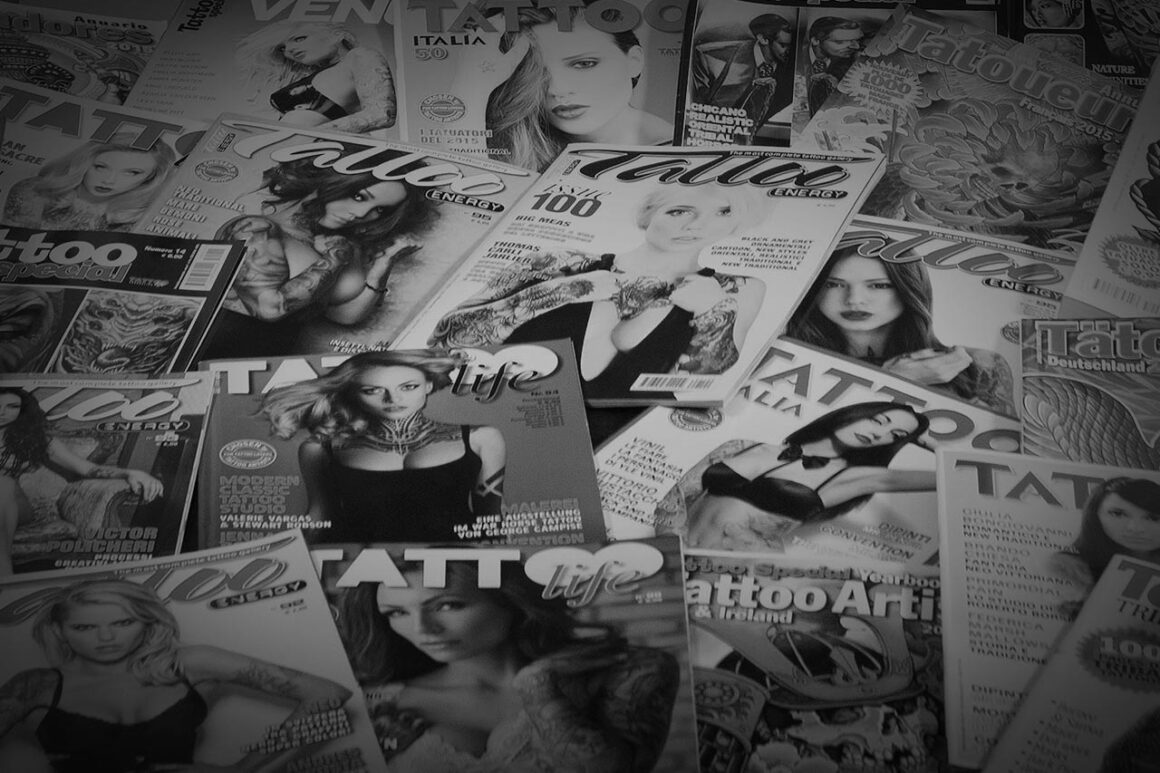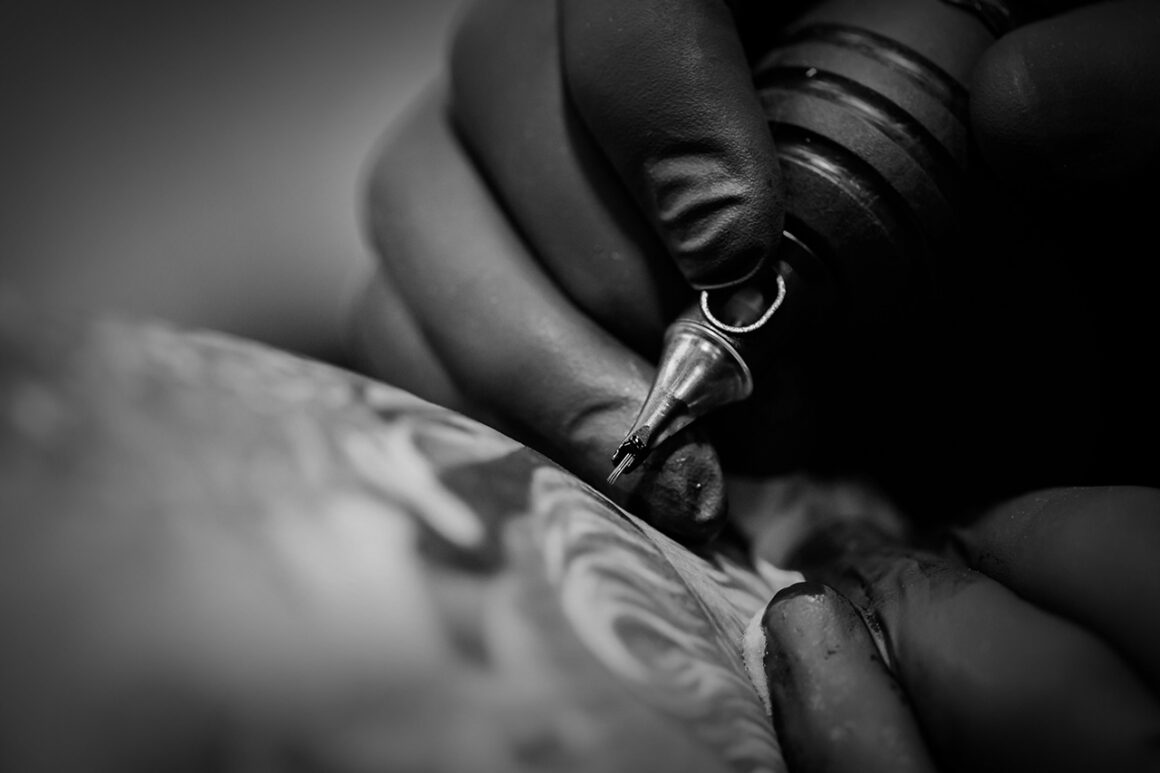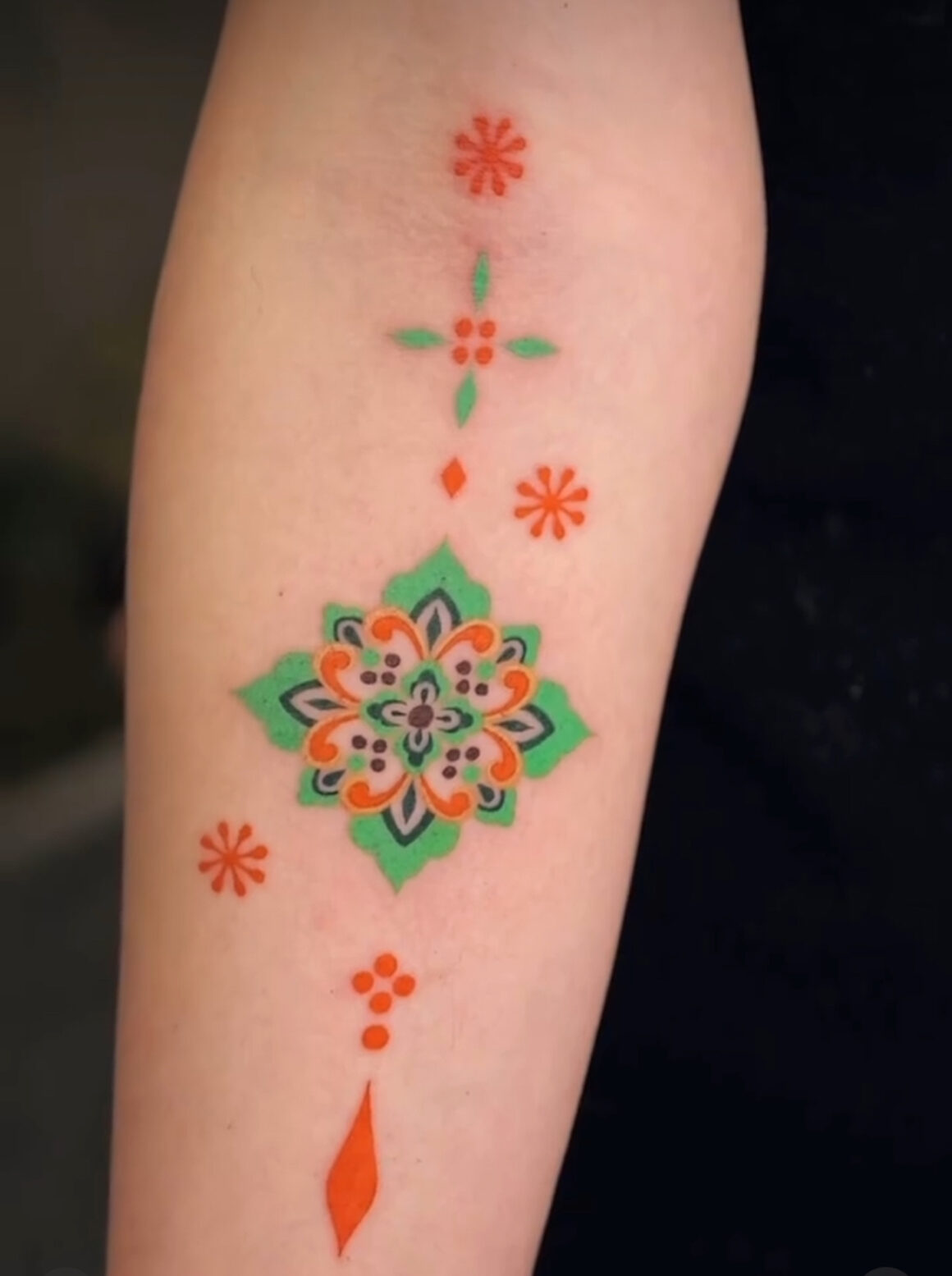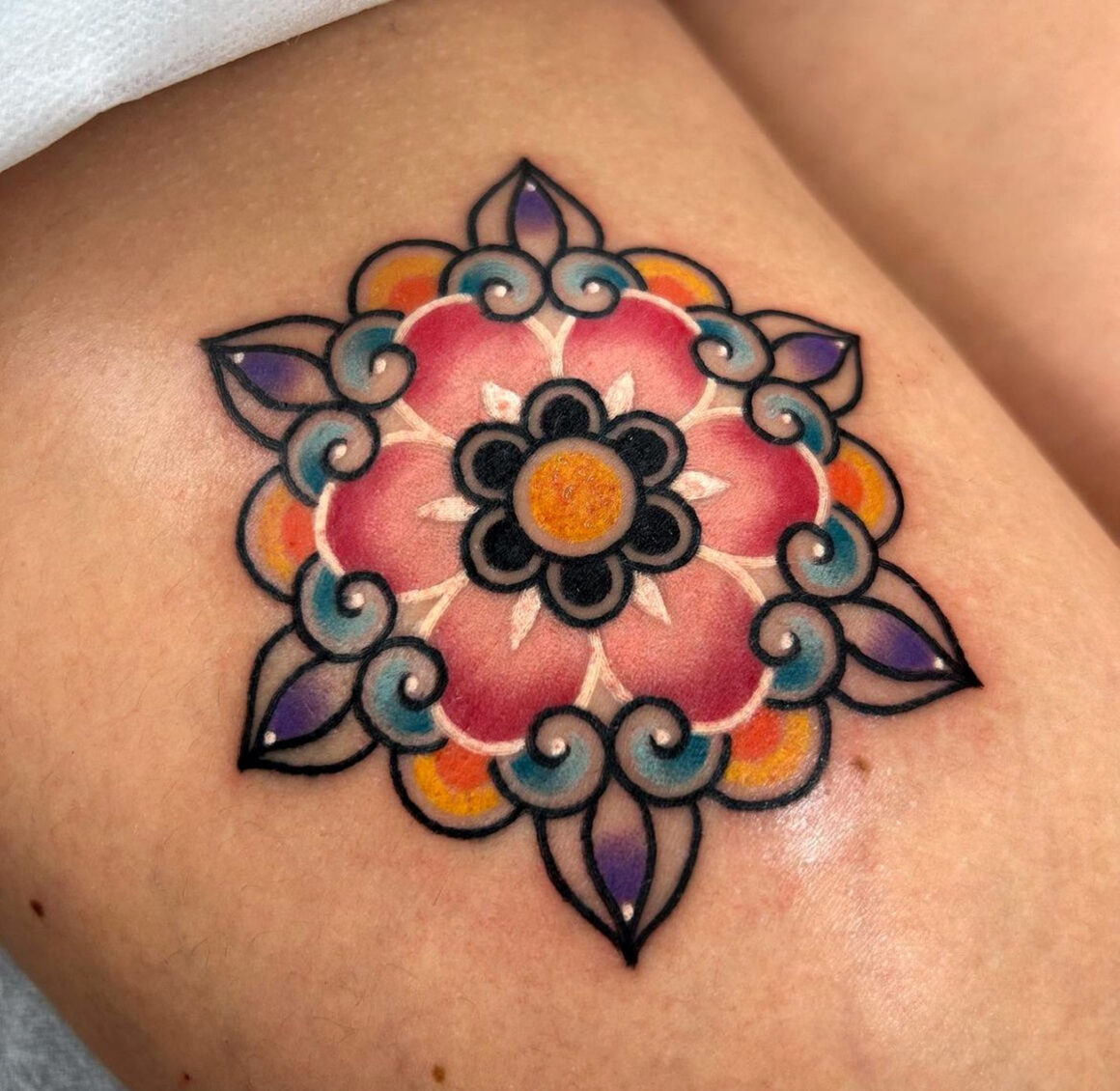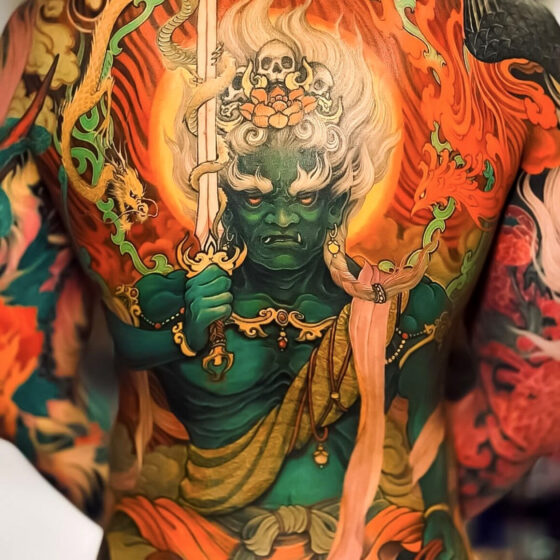The original term Dancheong (단청) refers to ornately decorated traditional Korean wooden buildings and to artifacts with specific traditional decorative colours and motifs found in tombs in Korea from 37BCE to 668CE. These symbols were used to portray the life of the occupant and well wish for their time in the afterlife.
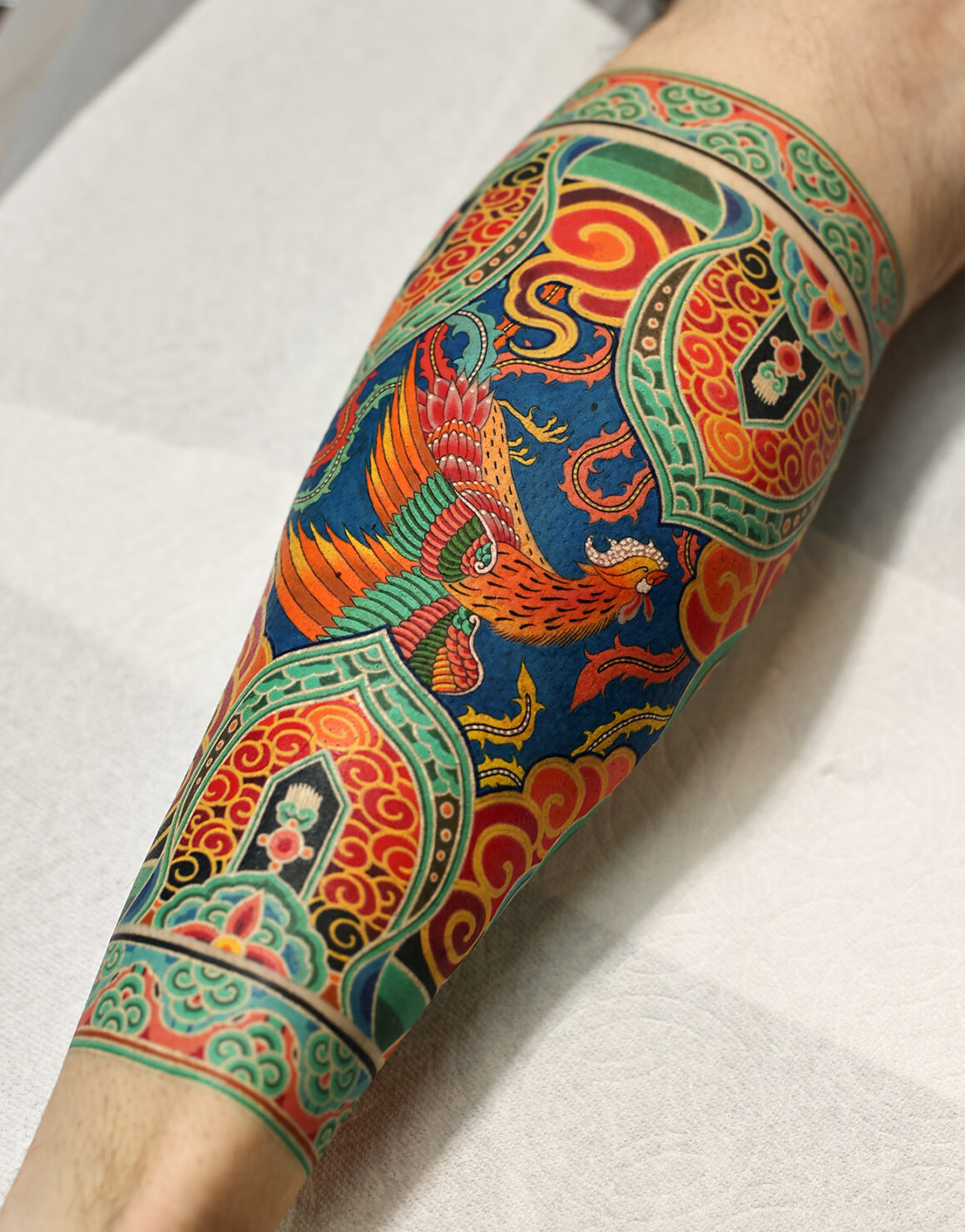
Literally Dancheong means ‘red and blue/green’ which are the basic pigments used to create the five classic colours of this art; they refer to specific meanings and represent cardinal points, yin and yang principles and the philosophy of the five elements.

In addition to this, each colour was used with a specific symbolic concept, for example the Blue represented east, dragon, spring, and wood.
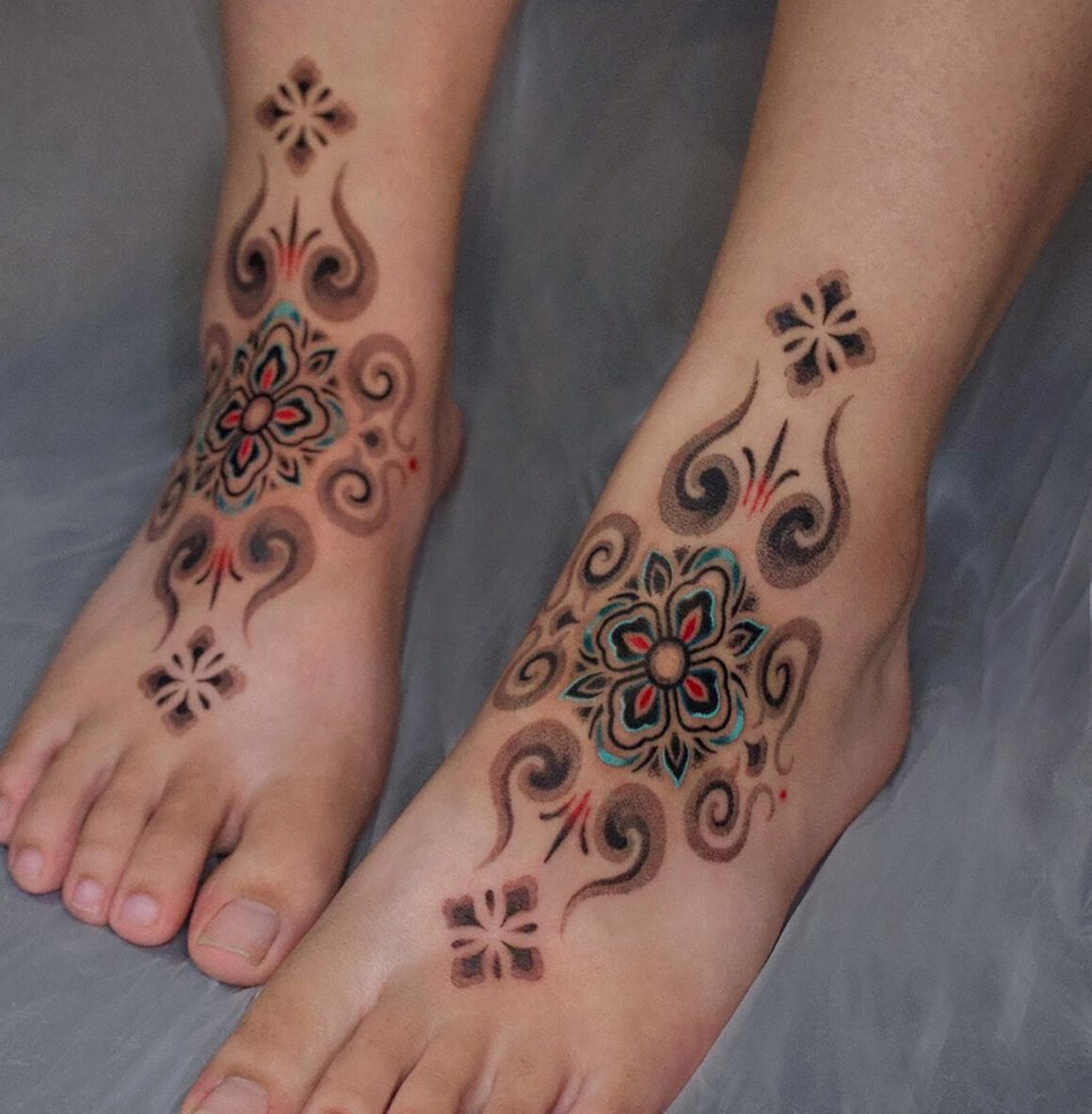
The colour White represented the west, tiger, fall and gold, Red represented the south, birds, summer and fire and Black, the north, the mythological animal named hyeonmy, winter and water.
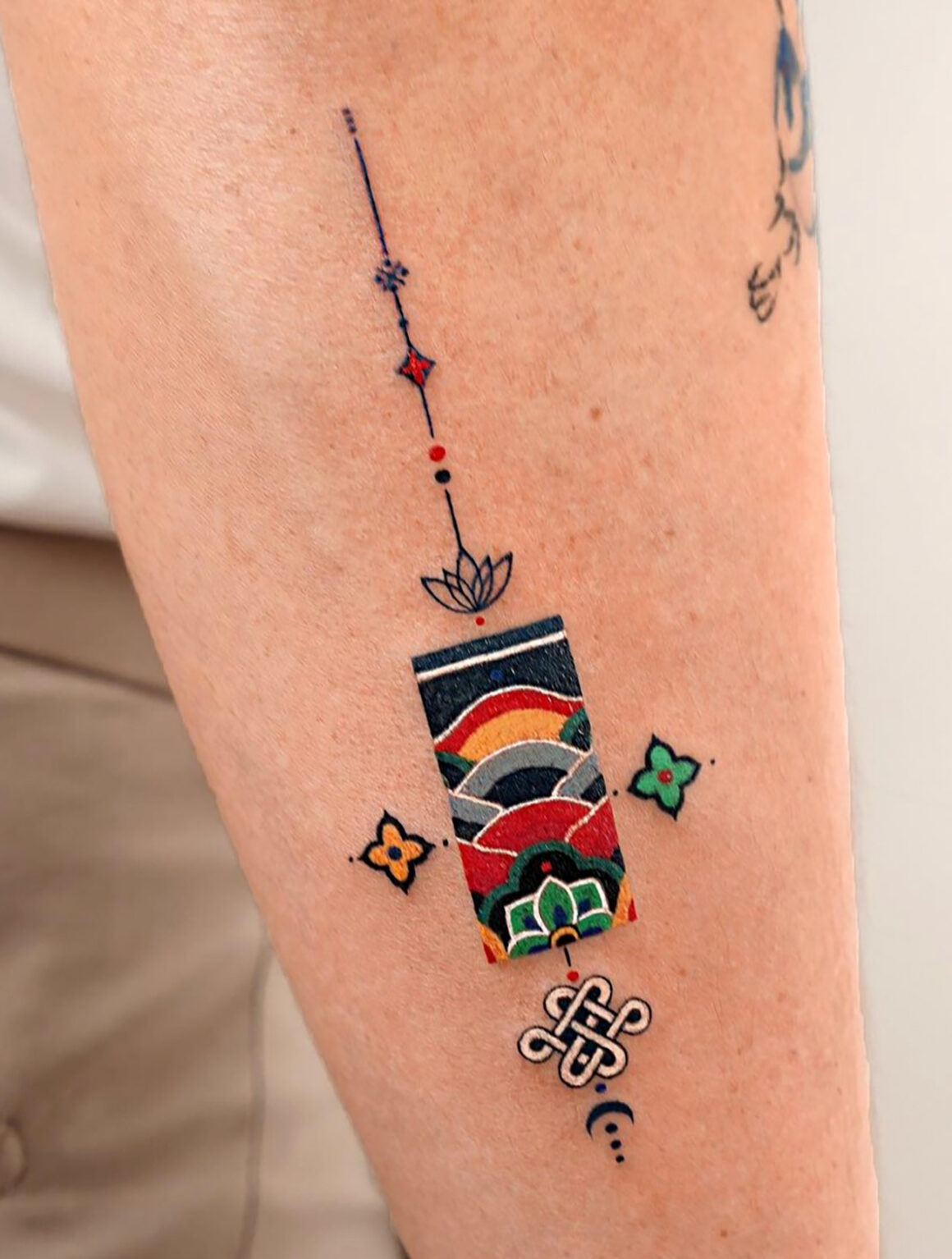
Korean tattoo artists modernize the Dancheong art to preserve the tradition of this craft, using the patterns and the classic colour in Ornamental tattoos with bright contrasting coloured areas, flowers, real or mythological animals and specific mandala typical of this unique form of art.
